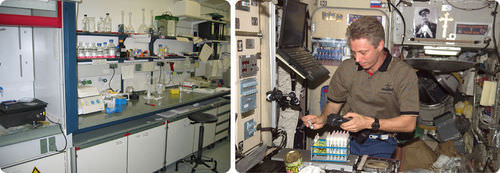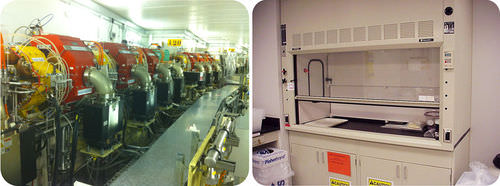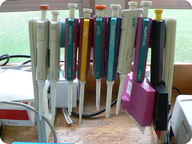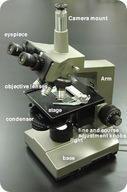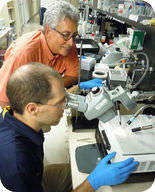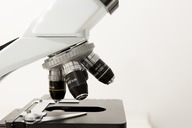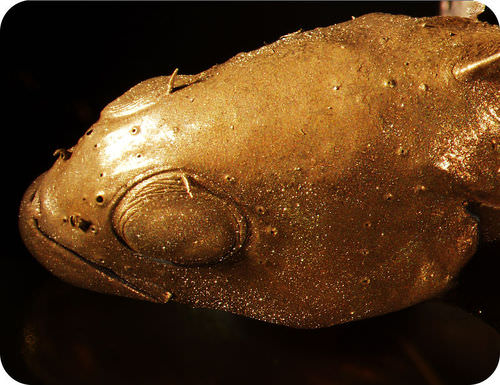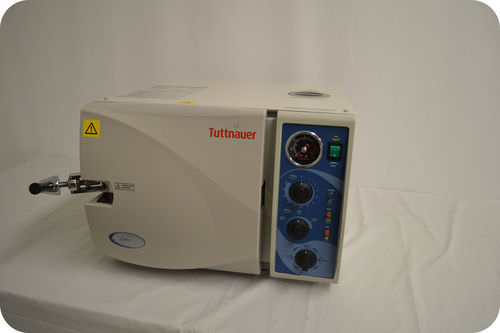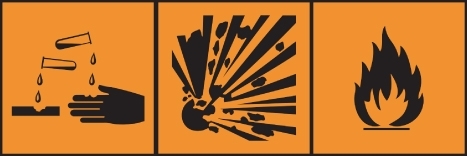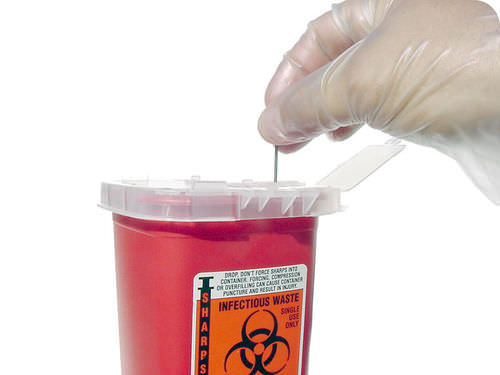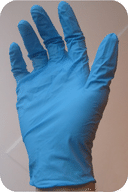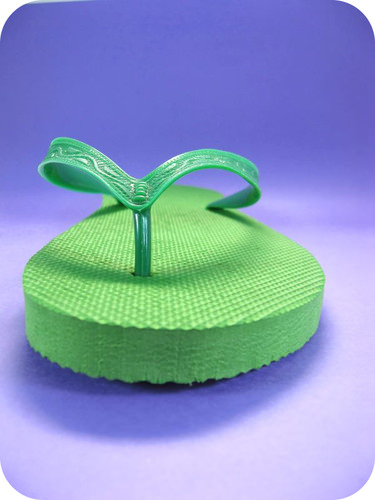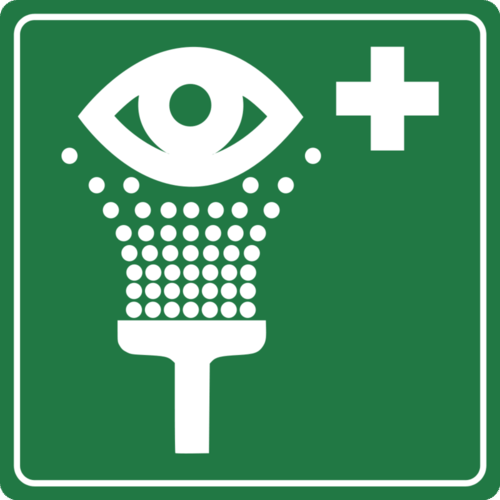1.10 实验室 -- -- 高级
章节大纲
-
What is a laboratory?
::什么是实验室?When most people think of a scientific laboratory, they picture images similar to those shown here. And it's true that a laboratory must be a controlled environment, but what if certain studies cannot be done in a laboratory setting? How do you observe penguins or elephants in their natural environments? What is the lab then?
::当大多数人想到一个科学实验室时, 他们想象的图像与这里显示的相似。 实验室必须是受控制的环境, 但是如果在实验室环境中无法进行某些研究呢? 您如何在自然环境中观察企鹅或大象? 那么实验室是什么?The Laboratory
::实验室A laboratory is a place that has controlled conditions in which scientific research, , and measurement may be carried out. Scientific laboratories can be found in schools and universities, in industries, in government facilities, and even aboard ships and spacecraft, such as the one shown in Figure .
::实验室是一个控制科学研究、测量和测量条件的场所,科学实验室可以在中小学、大学、工业、政府设施、甚至船只和航天器上找到,如图12所示。Labs are not always Earth-bound, like the biochemistry lab to the left is. This astronaut is working in a lab on the International Space Station (right).
::这名宇航员正在国际空间站(右)的一个实验室工作。Because of the different areas of science , there are many different types of science labs that each include different scientific equipment. For example, a physics lab might contain a particle accelerator, in which the particles that make up atoms are studied. A chemistry or biology lab most likely contains a fume hood where substances with poisonous fumes can be worked. A particle accelerator and a fume hood are both shown in Figure . Despite the great differences among labs, some features are common among them.
::由于科学领域不同,有许多不同类型的科学实验室,每个实验室都包括不同的科学设备。例如,物理实验室可能包含一个粒子加速器,用于研究构成原子的粒子。化学或生物实验室最有可能包含一个烟雾罩,其中含有有毒烟雾的物质可以工作。图中都显示一个粒子加速器和一个烟雾罩。尽管实验室之间存在巨大差异,但其中有一些特征是常见的。Most labs have workbenches or counter tops at which the scientist may sit or stand to do work comfortably. This is important because scientists can spend all day working in the lab. A scientist usually records an experiment's progress in a lab notebook, but modern labs almost always contain a computer for data collection and analysis. In many lab's computers are also used for lab simulations (modeling or imitating an experiment or a natural process), and for presenting results in the form of graphs or tables.
::多数实验室都有科学家可以安心地坐着或站着工作的工作室或柜台顶部。 这很重要,因为科学家可以在实验室工作一整天。 科学家通常用实验室笔记本记录实验的进展,但现代实验室几乎总是有计算机进行数据收集和分析。 许多实验室的计算机也用于实验室模拟(模拟或模仿实验或自然过程 ) , 以及以图表或表格的形式展示结果。Different fields of science need different types of equipment, such as the particle accelerator at left, found in a physics lab, and the fume hood, at right, found in chemistry labs, but also sometimes in biology labs.
::不同的科学领域需要不同类型的设备,如在物理实验室中发现的左侧粒子加速器和在化学实验室中发现的烟雾罩,但有时在生物学实验室中也是如此。Lab Equipment
::实验室设备设备Lab techniques include the procedures and equipment used in science to carry out an experiment. Lab techniques follow scientific methods; some of them involve the use of simple laboratory equipment such as glassware (shown on the shelves in Figure ), and some use more complex and expensive equipment such as electrical and computerized machines such as the particle accelerator shown in Figure .
::实验室技术包括用于进行实验的科学程序和设备,实验室技术采用科学方法;其中一些技术涉及使用简单的实验室设备,如玻璃器(在图3的架子上),有些技术使用更复杂、更昂贵的设备,如图3所示的微粒加速器等电气和计算机化机器。Equipment commonly found in biology labs includes microscopes, weighing scales or balances, baths, glassware (such as test tubes, flasks, and beakers), Bunsen burners, pipettes shown in Figure , chemical reagents, and equipment such as centrifuges and machines.
::生物学实验室中常见的设备包括显微镜、称秤或平衡器、浴缸、玻璃器件(如试验管、烧瓶和烧瓶)、Bunsen燃烧器、图3所示的管子、化学试剂以及离心机和机器等设备。Pipettes are small, but important tools in many biology labs. Micropipettes, such as the ones shown here, are calibrated to measure very small amounts of liquids. For example, 100 microliters (100 µL) is about half the volume of your little finger tip; or even 1 µL, which is much smaller than a drop of water.
::管道是很小的,但在许多生物学实验室中是重要的工具。 微水管,例如这里所展示的微水管,经过校准以测量很小数量的液体。 比如,100微升(100微升)大约相当于你小指尖的体积的一半;或者甚至比一滴水小得多的1微升。Light Microscopes
::轻型显微镜Microscopes are instruments used to view objects that are too small to be seen by the naked eye. Optical microscopes , such as the one shown in Figure , use visible light and lenses to magnify objects. They are the simplest and most widely used type of microscopes. Compound microscopes are optical microscopes which have a series of lenses: the ocular lens (in the eyepiece) and the objective lenses (close to the sample). These microscopes have uses in many fields of science-- particularly biology and geology. The scientist in Figure is looking through a stereo (notice the two lenses). This type of microscope uses the two lenses to produce a three-dimensional visualization of the sample being examined.
::显微镜是用来观察肉眼无法看得见的物体的工具。光显微镜,如图中所示的显微镜,使用可见光和镜头放大物体。它们是最简单和最广泛使用的显微镜类型。复合显微镜是光显微镜,有一系列镜片:眼镜(在眼镜中)和客观镜(接近于样本)。这些显微镜在许多科学领域——特别是生物学和地质学领域——都有用途。图中的科学家正在通过立体检查(注意到两个镜片)。这种显微镜使用两种镜片来产生对所审查的样品的三维可视化。Compound light microscopes use lenses to focus light. Typical magnification of a light microscope is up to 1500x. The various parts of the microscope are labeled. This specifically is a phase contrast microscope. Phase contrast microscopy is particularly important in biology, as it reveals many cellular structures that are not visible with a simpler bright field microscope.
::复合光显微镜使用透镜来聚焦光。光显微镜的典型放大作用最高为1500x。显微镜的各个部分都有标签。这具体是一个相向显微镜。相向显微镜在生物学中特别重要,因为它揭示了许多细胞结构,而这些细胞结构是用更简单的显眼显微镜看不到的。This scientist is using a stereo microscope, which is a light microscope with two ocular lenses.
::这位科学家正在使用立体显微镜,这是一个光显微镜,有两个眼镜。Resolution is a measure of the clarity of an image; it is the minimum distance two points can be separated and still be distinguished as two separate points. Because light beams have a physical size, which is described in wavelengths, it is difficult to see an object that is about the same size or smaller than the wavelength of light. Objects smaller than about 0.2 micrometers appear fuzzy, and objects below that size cannot be seen.
::分辨率是图像清晰度的量度;它是最小距离两个点可以分开,并且仍然可以分为两个不同的点。由于光束的物理大小,用波长描述,因此很难看到一个大小或小于光波长的物体。小于大约0.2微米的物体看起来模糊不清,而低于该大小的物体则看不见。Magnification involves enlarging the image of an object so that it appears much bigger than its actual size. Magnification also refers to the number of times an object is magnified. For example, a lens that magnifies 100X, magnifies an object 100 times larger than its actual size. Light microscopes have three objective lenses that have different magnifications, as shown in Figure . The ocular lens has a magnification of 10X, so a 100X objective lens and the ocular lens together will magnify an object by 1000X.
::放大需要放大物体的图像,使其看起来比实际大小大得多。放大还指物体放大的次数。例如,放大100X的镜片,放大100X的镜片比实际大小大100倍。如图所示,光显微镜有三个有不同放大作用的客观镜片。视觉镜片放大10X,因此100X的客观镜片和视觉镜片将放大1000X。Objective lenses of a light microscope.
::光显微镜的瞄准镜。Visible light has wavelengths of 400 to 700 nanometers, which is larger than many objects of interest such as the insides of . Scientists use different types of microscopes in order to get better resolution and magnification of objects that are smaller than the wavelength of visible light. Objects that are to be viewed under an electron microscope may need to be specially prepared to make them suitable for magnification.
::可见光光的波长为400至700纳米,大于许多感兴趣的物体,如内侧。科学家使用不同类型的显微镜,以便对比可见光的波长小的物体进行更好的分辨和放大。 电子显微镜下要查看的物体可能需要特别准备,使其适合放大。Electron Microscopes
::电子显微镜Electron microscopes use electrons instead of photons (light), because electrons have a much shorter wavelength than photons and thus allow a researcher to see things at much higher magnification, far higher than an optical microscope can possibly magnify.
::电子显微镜使用电子而不是光子(光子),因为电子的波长比光子短得多,从而使研究人员能够以比光显微镜高得多的放大度看到事物,远高于光显微镜可能放大。There are two general types of electron microscopes: the Transmission Electron Microscope and the Scanning Electron Microscope. The Transmission Electron Microscope shoots electrons through the sample and measures how the electron beam changes because it is scattered in the sample. The Scanning Electron Microscope scans an electron beam over the surface of an object and measures how many electrons are scattered back.
::电子显微镜有两种一般类型的电子显微镜:传送电子显微镜和扫描电子显微镜。传送电子显微镜通过样品拍摄电子,测量电子束由于分散在样品中而变化的方式。扫描电子显微镜扫描物体表面的电子束,测量有多少电子束分散在后面。Transmission electron microscopy (TEM) is an imaging method in which a beam of electrons is passed through a specimen. An image is formed on photographic film or a fluorescent screen by the electrons that scatter when passing through the object. TEM images show the inside of the object.
::传输电子显微镜(TEM)是一种成像方法,通过标本传递一束电子,在摄影胶片或荧光屏幕上由通过物体时散布的电子形成图像。TEM图像显示物体的内部。The scanning electron microscope (SEM) is a type of electron microscope capable of producing high-resolution images of a sample surface. Due to the manner in which the image is created, SEM images have a characteristic three-dimensional appearance and are useful for judging the surface structure of the sample. Sometimes objects need to be specially prepared to make them better suited for imaging under the scanning electron microscope, as shown with the insect in Figure .
::扫描电子显微镜(SEM)是一种电子显微镜,能够产生样本表面的高分辨率图像。由于图像的生成方式,SEM图像具有三维特征,可用于判断样本的表面结构。有时,需要特别准备物体,使其更适合扫描电子显微镜下的成像,图中的昆虫就表明了这一点。Electron microscopes are usually used in vacuum chambers under low pressures to avoid scattering the electrons in the gas. This makes the microscopes considerably larger and more expensive than optical microscopes. The different types of images from the two electron microscopes are shown in Figure .
::电显微镜通常在低压力下用于真空室,以避免气体中的电子散射,从而使显微镜比光显微镜大得多,而且费用更高。This fish has been coated in gold, as part of the preparation for viewing with an SEM.
::这条鱼被涂在金子上 作为准备观看SEM的一部分SEM and TEM images of the algae Chlamydomonas . The SEM image, shown at the right, is a three-dimensional image of the surface of the organism, whereas the TEM image is a two-dimensional image of the interior of the organism.
::SEM 和 TEM 藻类 Cllamydomonas 的图像。 右侧显示的SEM 图像是生物体表面的三维图像,而TEM 图像是生物体内部的二维图像。Aseptic Technique
::麻风病技术In the microbiology lab, aseptic technique refers to the procedures that are carried out under sterile conditions. Scientists who study microbes are called microbiologists. Microbiologists must carry out their lab work using the aseptic technique to prevent microbial contamination of themselves, contamination of the environment they are working in, including work surfaces or equipment, and contamination of the sample they are working on. live on just about every surface on Earth, so if a scientist wants to grow a particular type of bacterium in the lab, he or she needs to be able to sterilize their equipment to prevent contamination by other bacteria or microorganisms. The aseptic technique is also used in medicine, where it is important to keep the free of contamination.
::在微生物实验室,无菌技术是指在不育条件下实施的程序; 研究微生物的科学家称为微生物学家; 微生物学家必须利用无菌技术进行实验室工作,以防止微生物污染,防止他们工作的环境受到污染,包括工作表面或设备,以及他们所工作的样品受到污染; 生活在地球上的每一个表面, 因此,如果科学家希望在实验室中种植一种特定种类的细菌,他或她必须能够对其设备进行消毒,以防止其他细菌或微生物的污染; 在医学中也使用无菌技术,因为必须避免污染。Aseptic technique is used whenever bacteria or other microbes are transferred between nutrient media or in the preparation of the nutrient media. Some equipment that is used in the aseptic technique includes Bunsen burners, autoclaves ( Figure ), hand and surface sanitizers, neoprene gloves, and fume hoods.
::每当细菌或其他微生物在养分介质之间或为养分介质的准备过程中转移时,都使用抗菌技术,在养分介质中使用的一些设备包括本森燃烧器、高压菜(图),手和表面消毒剂、新乳头手套和烟头罩。Students of microbiology are taught the principles of aseptic technique by hands-on laboratory practice. Practice is essential in learning how to handle the lab tools without contaminating them.
::微生物学学生通过亲手实践学习无菌技术原则,在学习如何使用实验室工具而不污染它们方面,实践至关重要。A worktop autoclave. Autoclaves commonly use steam heated to 121°C (250°F), at 103 kPa (15 psi) above atmospheric pressure. Solid surfaces are effectively sterilized when heated to this temperature. Liquids can also be sterilized by this process, though additional time is required to reach sterilizing temperature.
::工作托式自动板块。 自动板块通常使用蒸汽加热到121°C(250°F),高于大气压力103千帕(15皮西),固体表面在加热到这种温度时有效消毒,液体也可以通过这一工艺消毒,不过达到消毒温度还需要更多的时间。Lab Safety
::实验室安全In some laboratories, conditions are no more dangerous than in any other room. In many labs, though, additional hazards are present. Laboratory hazards are as varied as the subjects of study in laboratories, and might include poisons, infectious agents, flammable, explosive, or radioactive materials, moving machinery, extreme temperatures, or high voltage. The hazard symbols for corrosive, explosive, and flammable substances are shown in Figure . In laboratories where conditions might be dangerous, safety precautions are important. Lab safety rules minimize a person’s risk of getting hurt, and safety equipment is used to protect the lab user from injury or to help in responding to an emergency.
::在某些实验室中,危险条件并不比任何其他实验室更为危险,但在许多实验室中,存在额外的危险。实验室危险与实验室研究对象一样多种多样,可能包括毒药、传染病剂、易燃剂、爆炸性物质或放射性材料、移动机械、极端温度或高压。图中显示了腐蚀性、爆炸性或易燃物质的危险标志。在条件可能很危险的实验室中,安全防范是十分重要的。实验室安全规则尽量减少一个人受到伤害的风险,安全设备用于保护实验室使用者免受伤害或帮助应对紧急情况。The hazard symbols for corrosive, explosive, and flammable substances.
::腐蚀性、爆炸性和易燃物质的危险符号。Immediate disposal of used needles, and other sharp equipment into a sharps container is standard procedure.
::标准程序是立即将旧针头和其他尖锐设备处理成尖锐的容器。Some safety equipment that you might find in a biology lab includes:
::生物学实验室中可能发现的一些安全设备包括:-
Sharps Container
: A container that is filled with used medical
needles
and other sharp instruments such as
blades
, shown in
Figure
. Needles or other sharp items that have been used are dropped into the container without touching the outside of the container. Objects should never be pushed or forced into the container, as damage to the container or injuries may result.
::集装箱:装满二手医用针头和其他尖锐器械的集装箱,如图2所示的刀片等。 不露品或已经使用过的其他尖锐器械,在不触动集装箱外面的情况下,扔入集装箱内,不得将物体推入或强行推入集装箱内,因为集装箱可能受损或受伤。 -
Laminar Flow Cabinet
: A carefully enclosed bench designed to prevent contamination of biological samples. Air is drawn through a fine filter and blown in a very smooth, laminar (streamlined) flow towards the user. The cabinet is usually made of stainless steel with no gaps or
where microorganisms might collect.
::Liminar Flow内阁:一个谨慎封闭的长椅,目的是防止生物样品污染;空气通过细细的过滤器抽取,在非常顺畅的、薄膜(流线)流向用户时吹散;内阁通常由不锈钢制成,没有缝隙或微生物可能收集的地方。 -
Gloves
: Due to possible allergic reactions to latex, latex gloves are not recommended for lab use. Instead, vinyl or nitrile gloves, shown in
Figure
, are often used. Gloves protect the wearers hands and skin from getting contaminated by microorganisms or stained or irritated by chemicals.
::手套:由于可能对乳胶过敏反应,不建议实验室使用乳胶手套,而是经常使用图中所示的乙烯或硝酸手套,手套保护穿戴者的手和皮肤不受微生物污染或受化学品沾染或刺激。
A nitrile glove. Latex gloves are no longer recommended so vinyl gloves or nitrile gloves, which are usually green or blue in color, are preferred.
::硝化甘油手套 乳胶手套不再被推荐使用 所以乳胶手套或硝化甘油手套 通常是绿色或蓝色的-
Lab Coat
: A knee-length overcoat is usually worn while working in the lab. The coat helps to protect the researcher’s clothes from splashes or contamination. The garment is made from white cotton or linen to allow it to be washed at high temperatures and to make it easy to see if it is clean.
::Lab Coat: 在实验室工作时通常穿戴膝盖长的外衣,这件外衣有助于保护研究人员的衣服免受喷洒或污染。 服装用白棉或白衣做成,以便在高温下洗涤,并方便地看它是否干净。
Safe Laboratory Practice
::安全实验室做法Safety precautions are in place to help prevent accidents. Always wear personal protective equipment such as goggles and gloves when recommended to do so by your teacher.
::安全防范措施已经到位,有助于预防事故,在教师建议时,必须佩戴护目镜和手套等个人防护设备。-
Tell your teacher immediately if an accident happens.
::发生意外时立即通知老师 -
The production of aerosols due to poor technique such as squirting the last drop out of pipettes, and the spread of contamination due to spills is completely avoidable and especially important if you are handling infectious material or chemicals.
::生产气溶胶是由于技术差,如排气管最后一滴漏气,以及溢漏造成的污染扩散是完全可以避免的,而且对于处理传染性物质或化学品来说尤其重要。 -
Wear enclosed toe shoes, instead of sandals or flip flops, or thongs (
Figure
). Your feet and toes could easily get hurt or broken or if you dropped something.
::穿着脚趾鞋,而不是凉鞋、翻滚鞋或丁字裤(图 ) 。 你的脚和脚趾很容易受伤或折断,或者掉了什么东西。 -
Do not wear loose, floppy clothes in the lab; they can get caught in or knock over equipment, causing an accident.
::在实验室里不要穿松散的软体衣服;他们可能会被困在设备中或被撞倒,造成事故。 -
If you have long hair, tie it up for the same reasons listed above.
::若长发,请与上述理由相同,将头发绑起来。 -
Do not eat or drink in the lab.
::不要在实验室里吃饭或喝酒 -
Do not use cell phones in the lab, even if you are only sending a text message. You can easily contaminate your phone with whatever you have been working with. Consider where your hands have been, and where your face will be the next time you talk on the phone.
::不要在实验室使用手机, 即使您只是发短信。 您可以很容易地用任何您一直在工作的东西污染您的手机 。 想想你的手在哪里, 下次您在电话上交谈时, 您的脸会在哪里 。 -
Sweep up broken glass immediately and dispose in a designated area or container, or notify your teacher.
::立即扫扫破碎玻璃,在指定区域或容器内处置,或通知教师。 -
Always listen carefully to your teacher’s instructions.
::总是仔细听老师的指示。
Although they may be comfy and casual, flip-flops and other open-toed shoes are not suitable footwear in the lab.
::虽然它们可能舒适和随意,但翻转式拖鞋和其他露脚鞋不适合实验室的鞋类。Accidents
::事故事故In the case of an accident, it is important to begin by telling your teacher and to know where to find safety equipment.
::在发生事故时,必须首先告诉你的老师,并知道在哪里找到安全设备。Some common safety equipment in a school lab:
::学校实验室的一些通用安全设备:-
Fire Extinguishers
::灭火灭火者 -
Fire Blanket
::灭火毯 -
Eye-Wash Fountain (
Figure
)
::Eye-Wash不老泉(图) -
First-Aid Kit
::急救包
Symbol for the eyewash fountain.
::眼水喷泉的标志Through the first three lessons, we have discussed what science is and how science is done. Now we need to turn our attention to Biology. Biology is the study of life. As the ‘study of life,’ a knowledge of biology is an extremely important aspect of your education. Biology includes the identification and analysis of characteristics common to all living organisms . What is known about biology is discovered or identified through the same processes as all other sciences, including the and peer review process.
::通过前三节课,我们讨论了科学是什么,科学是如何完成的。 现在我们需要将注意力转向生物学。生物学是生命的研究。生物学是生命的研究。生物学是生物学的“生命研究 ” , 生物学知识是你们教育中一个极为重要的方面。生物学包括识别和分析所有活生物体共有的特征。生物学的已知特征是通过与所有其他科学相同的过程发现或识别的,包括同侪审查过程。Summary
::摘要-
Equipment commonly found in a biology labs include microscopes, weighing scales or balances, water baths, glassware (such as test tubes, flasks, and beakers), Bunsen burners, tongs, pipettes, chemical reagents, lab coats, goggles, and biohazard waste containers.
::生物学实验室中常见的设备包括显微镜、称秤或平衡器、水浴、玻璃器(例如试验管、烧瓶和烧瓶)、本森燃烧器、TOng、管子、化学试剂、实验室外套、护目镜和生物危害废物容器。 -
Always wear personal protective equipment such as goggles and gloves, wear enclosed shoes, and do not eat or drink in the lab.
::总是佩戴护目镜和手套等个人防护设备,穿紧身鞋,不在实验室吃喝。
Review
::回顾-
What is a laboratory? Where can they be found?
::什么是实验室?在哪里能找到它们? -
What is the main difference between a light microscope and an electron microscope.
::光显微镜与电子显微镜的主要区别是什么? -
What is an aseptic technique and what equipment does it require?
::什么是无菌技术,需要何种设备? -
Name three pieces of safety equipment that you should wear while carrying out an investigation in the lab.
::请列出在实验室进行调查时应该穿的三件安全设备。 -
What should you first do if an accident happens in the lab?
::如果实验室发生意外,你应该先怎么办? -
If you saw this hazard sign on a chemical container, what do you think it might mean?
::如果你在化学容器上看到这个危险标志 你觉得它可能意味着什么?
Explore More
::探索更多Use this resource to answer the question that follows.
::使用此资源回答以下问题 。-
List the laboratory rules described in this video.
::列出本视频描述的实验室规则。
-
Sharps Container
: A container that is filled with used medical
needles
and other sharp instruments such as
blades
, shown in
Figure
. Needles or other sharp items that have been used are dropped into the container without touching the outside of the container. Objects should never be pushed or forced into the container, as damage to the container or injuries may result.

